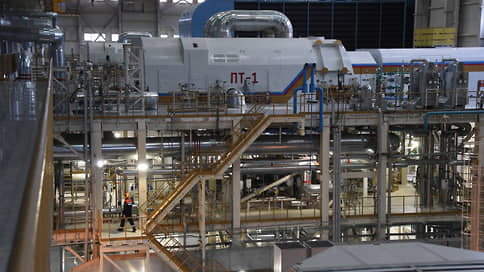Construction of 1.2 GW of new power plants in Siberia may require up to 507 billion rubles
[ad_1]

As Kommersant found out, the Ministry of Energy has prepared for discussion the financial parameters for the construction of a new gas or coal generation facility for 1.2 GW in Siberia. The maximum level of capital costs for the construction of power units based on Russian equipment may be 507 billion rubles. in 2028 prices, and the base profitability of the project is 12%. There is also an alternative: the construction of thermal power plants using foreign equipment with a maximum CAPEX of 334 billion rubles. and a basic yield of 10.5%. According to analysts, investors will build thermal power plants using Russian or Chinese steam turbines, since the gas turbines available under sanctions have not been tested in Siberian conditions.
The Ministry of Energy has prepared the parameters of a mechanism for compensating costs for the construction of new thermal power plants in Siberia with a capacity of at least 1.225 GW. The ministry will present two proposals at a meeting of the government commission on the development of the electric power industry, several sources in the market and regulators told Kommersant. According to the first option, investors will be able to build gas or coal thermal power plants only using Russian equipment (including boilers and turbines). The maximum value of specific capital costs is 414 thousand rubles. for 1 kW (in 2028 prices). Thus, the maximum total CAPEX for construction of 1.225 GW is 507 billion rubles. Basic yield – 12%.
The second option involves the possibility of using foreign equipment. In this case, the maximum specific CAPEX is 273 thousand rubles. per 1 kW (in 2028 prices), and the maximum total CAPEX is 334.4 billion rubles. Basic yield – 10.5%. For comparison: in the program for modernizing old thermal power plants, which began in 2019, the level of profitability is higher – 14%. The maximum level of specific operating costs in both scenarios is proposed to be set at 397.4 thousand rubles. for 1 MW per month (in 2028 prices). The maximum power of one unit is 330 MW. The launch date is September 1, 2028.
Construction projects will be selected at the lowest price in a competition that could take place in late 2023 or early 2024. The capacity of the thermal power plant will be paid for by consumers in the European part of the Russian Federation, the Urals and Siberia. Kommersant’s interlocutors clarify that initially the ministry proposed establishing localization requirements and bringing up only one option for discussion. But after meetings with market participants, an alternative option was developed with foreign suppliers to speed up construction. The Ministry of Energy did not respond to Kommersant’s request. It is assumed that new generation will be built in the south of the Trans-Baikal Territory and Buryatia and in the Ziminsky energy district of the Irkutsk region. The investor can build a power unit from scratch or at an existing thermal power plant.
The “system operator” (energy system dispatcher) predicts a shortage of energy capacity in the southeast of Siberia during repairs starting in 2024. The generation gap will reach 1.23 GW by 2029. Among the reasons are the commissioning of facilities at the Eastern Polygon of Russian Railways with a consumption of 644 MW, as well as smaller consumers, including greenhouses, gold deposits, residential complexes and cryptocurrency mining centers. The “Community of Energy Consumers” (unites industrial consumers of electricity) believes that “it is advisable to take a set of measures that will eliminate the risk of disruption of energy supply to consumers and limit the growth of the tariff and price burden.”
Based on the short deadlines for commissioning the stations, it is hardly possible to talk about the construction of power units using gas turbines, says independent analyst Yuri Melnikov. Russian gas turbines from Rostec and Power Machines have not yet reached the commercialization stage, and probable Iranian and Chinese copies of Siemens and GTD-110 turbines have not been tested in Siberia, the expert clarifies. In his opinion, the most likely option is to use steam power technologies of the 1960s–1980s with priority involvement of suppliers from the Russian Federation (Silmash and the Ural Turbine Plant), and Chinese suppliers as a reserve.
[ad_2]
Source link





